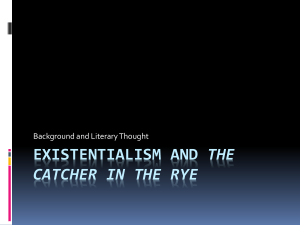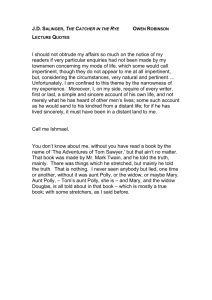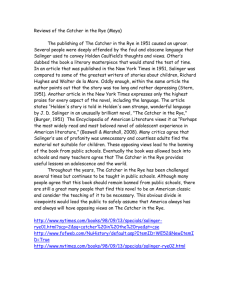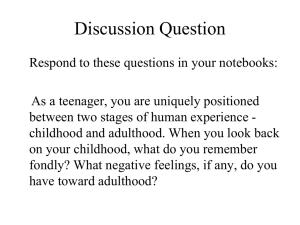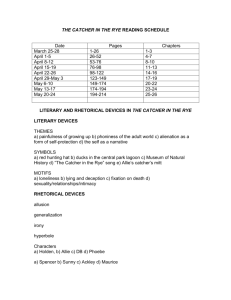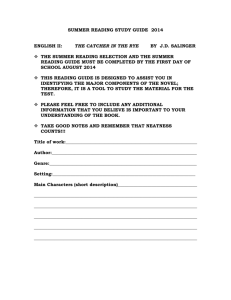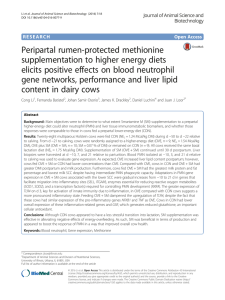Part I (20 %)
advertisement
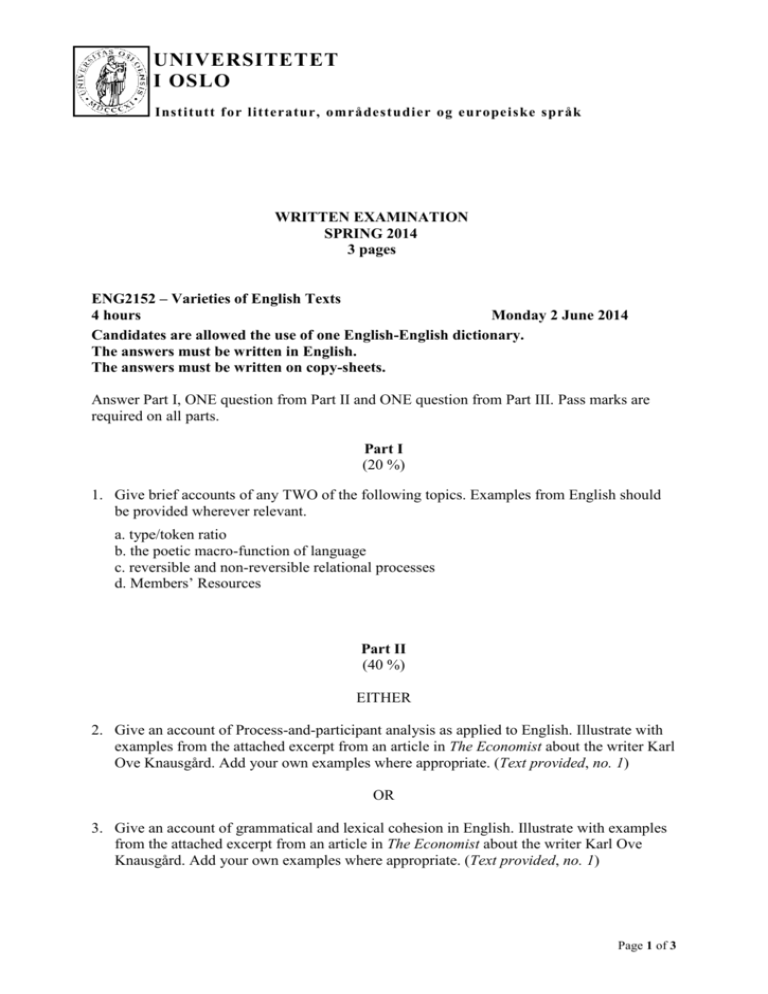
UNIVERSITETET I OSLO Institutt f or litteratur, områdestudier og europeiske språk WRITTEN EXAMINATION SPRING 2014 3 pages ENG2152 – Varieties of English Texts 4 hours Monday 2 June 2014 Candidates are allowed the use of one English-English dictionary. The answers must be written in English. The answers must be written on copy-sheets. Answer Part I, ONE question from Part II and ONE question from Part III. Pass marks are required on all parts. Part I (20 %) 1. Give brief accounts of any TWO of the following topics. Examples from English should be provided wherever relevant. a. type/token ratio b. the poetic macro-function of language c. reversible and non-reversible relational processes d. Members’ Resources Part II (40 %) EITHER 2. Give an account of Process-and-participant analysis as applied to English. Illustrate with examples from the attached excerpt from an article in The Economist about the writer Karl Ove Knausgård. Add your own examples where appropriate. (Text provided, no. 1) OR 3. Give an account of grammatical and lexical cohesion in English. Illustrate with examples from the attached excerpt from an article in The Economist about the writer Karl Ove Knausgård. Add your own examples where appropriate. (Text provided, no. 1) Page 1 of 3 Part III (40 %) EITHER 4. Give an account of the conversational principles of co-operation and politeness. The attached excerpt from J.D. Salinger’s novel The Catcher in the Rye should be used for exemplification. Add your own examples where appropriate. (Text provided, no. 2) OR 5. Give an account of the various ways in which speech and thought may be rendered in fiction. The attached excerpt from J.D. Salinger’s novel The Catcher in the Rye should be used for exemplification. Add your own examples where appropriate. (Text provided, no. 2) Text provided, no. 1 Northern light: One of Europe’s most remarkable literary talents explains the autobiography that made his name THE man standing on the platform at Ystad station, in southern Sweden, looks more like a grunge rocker than a literary superstar: long hair, beard, scuffed boots, glowing cigarette, hat 3 pulled down against the bitter cold. His white van is so grimy that it is almost black. The stereo blasts out at full volume. There is a fearsome-looking dog cage in the back. Karl Ove Knausgaard is the author of one of the most idiosyncratic literary works of recent years: a six6 volume, 3,500-page autobiography called “My Struggle”, after Hitler’s “Mein Kampf”. “My Struggle” is being translated into English with frequently ecstatic reviews. It is the most exhaustive account of a modern life ever written. Mr Knausgaard devotes pages to buying 9 beer as a teenager, or pushing a pram as a new father. But he is saved from being boring by four things. The first is the energy of his writing: what it lacks in polish it makes up for in immediacy. The second is his willingness to “put everything into a book”, as he describes it. 12 He not only dwells on things that other writers might consider to be beneath consideration. He dares to be politically incorrect: to reveal, for example, how humiliating it is for a hulking man to take his children to play groups. The third element is the sense of transcendence: “My 15 Struggle” is full of quasi-religious moments when the author sees something bigger lurking beneath the surface of events. (Though not a Christian, Mr Knausgaard was involved with a recent new translation of the Bible into Norwegian.) The fourth and most important thread is 18 Mr Knausgaard’s father, who provides the book with both its narrative drive and its allenveloping sense of menace. His publishers astonished him by telling him to make the book longer. They suggested turning 21 it into 12 volumes, to be published in monthly instalments, but eventually settled for six. This plunged him into a bizarre literary exercise. He was writing up to 20 pages a day in order to hit his deadlines. But unlike Charles Dickens, who produced plot-driven novels to order, he 24 was baring bits of his soul to a timetable. Mr Knausgaard used the sixth volume, which has not yet been translated into English, to tell the story of the book’s reception. (Adapted from The Economist) Page 2 of 3 Text provided, no. 2 ‘Hey,’ Stradlater said. ‘Wanna do me a big favour?’ ‘What?’ I said. Not too enthusiastic. He was always asking you to do him a big favour. You take a very handsome guy, or a guy that thinks he’s a real hot-shot, and they’re always asking you to do them a big favour. Just because they’re crazy about 5 themself, they think you’re crazy about them, too, and that you’re just dying to do them a favour. It’s sort of funny, in a way. ‘You goin’ out tonight?’ he said. ‘I might. I might not. I don’t know. Why?’ ‘I got about a hundred pages to read for History for Monday,’ he said. ‘How about 10 writing a composition for me, for English? I’ll be up the creek if I don’t get the goddam thing in by Monday. The reason I ask. How ’bout it?’ It was very ironical. It really was. ‘I’m the one that’s flunking out of the goddam place, and you’re asking me to write you a goddam composition,’ I said. 15 ‘Yeah, I know. The thing is, though, I’ll be up the creek if I don’t get it in. Be a buddy. Be a buddyroo. Okay?’ I didn’t answer him right away. Suspense is good for some bastards like Stradlater. ‘What on?’ I said. ‘Anything. Anything descriptive. A room. Or a house. Or something you once lived in 20 or something – you know. Just as long as it’s descriptive as hell.’ He gave out a big yawn while he said that. (From J.D. Salinger, The Catcher in the Rye) 1 The marks will be published in Studentweb within 3 weeks. You will receive an e-mail when the results are ready. For an explanation of the mark obtained, please contact the exam administrator, Kristin Berstad (k.m.berstad@ilos.uio.no) within one week after the exam results have been published. Remember to include your name and candidate number. The examiner will then decide whether to give a written or oral explanation. Page 3 of 3
